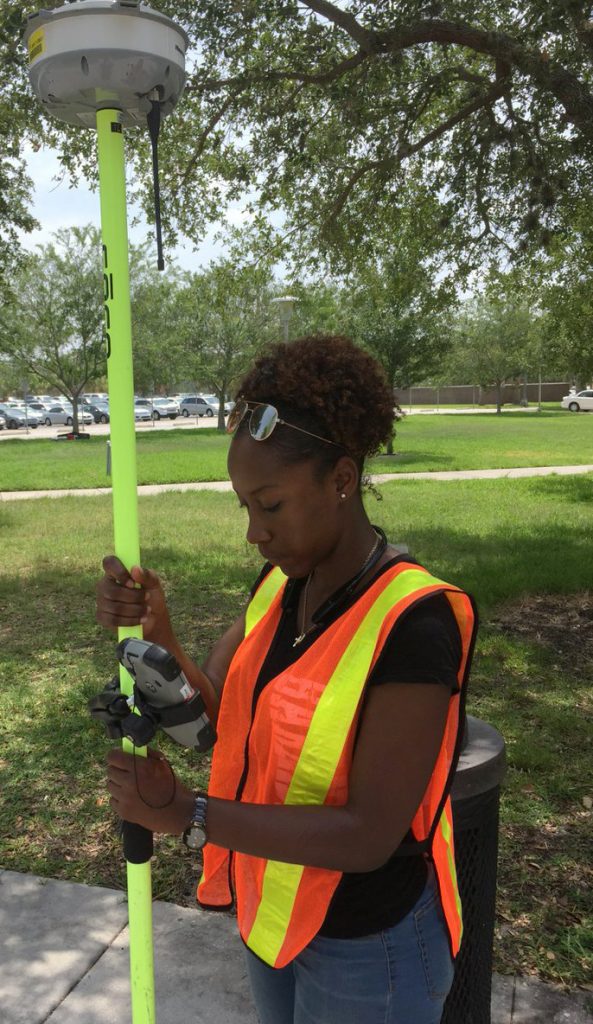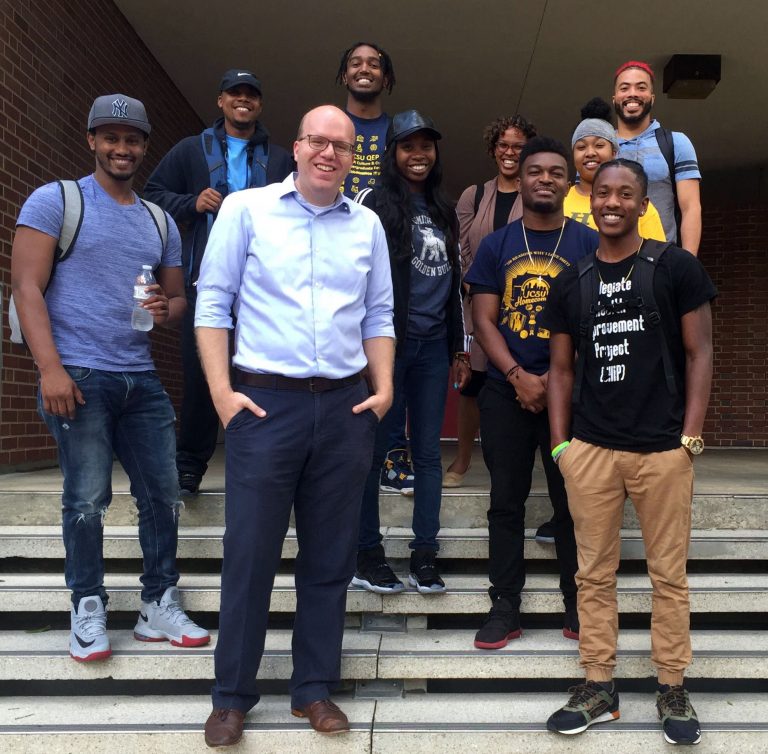For the second summer, undergraduate and graduate students in Coastal Resilience Center of Excellence (CRC) education programs were involved in a wide variety of academic exchange and professional internship programs, providing them the opportunity to gain important research skills and experience designed to aid their academic and future careers.

Eight students who are enrolled in CRC-supported courses at partner universities were hosted by principal investigators (PIs) of CRC research projects through the SUMmer Research Experience (SUMREX) Program. As part of the program, CRC Education & Workforce Development partners arrange for one or more students to visit the home institution of participating CRC researchers for a summer research internship lasting between six and 10 weeks. Key to the program’s success is making the best match between the student interns and the research PIs, so that the students have the opportunity to become fully immersed in a research project. Students come largely from Minority-Serving Institutions, part of the CRC’s work to increase diversity in research environments.
Sabrina Welch, a PhD candidate in Engineering at Jackson State University, and Diego Delgado, a graduate student in Engineering at the University of Puerto Rico-Mayagüez, were hosted first by Dr. Stephen Medeiros at the University of Central Florida (UCF) and later by Dr. Scott Hagen at Louisiana State University (LSU).
During the UCF portion of her summer experience, Welch said she learned the fundamentals of the ADvanced CIRCulation (ADCIRC) model. This included the completion of a mathematical methods pre-test in addition to the Surface-water Modeling System (SMS + ADCIRC) boot camp tutorial. Two field days were also included, the first covering the basics of Real Time Kinematic (RTK) surveying, while the second day focused on teaching methods of assessing land cover in order to determine Manning’s n Value for a site of interest.
The second half of Welch’s SUMREX experience was spent at LSU, where she applied the knowledge gained at UCF. At LSU, she learned about high-performance computing and the Linux command line, the generation of ADCIRC required input files, executed storm surge simulations and analyzed output data.
“The SUMREX research program was a great experience for me as a rising ADCIRC user,” Welch said. “My participation in this program has led to an improved understanding of the ADCIRC system, which is beneficial since ADCIRC will play a major role in my PhD dissertation topic, and the knowledge gained will aid in the development of my aspiring career as a coastal engineer.”
In other pairings, two students from the University of Puerto Rico-Mayagüez, Hector J. Colon and Peter Rivera, both undergraduate students in Engineering, were hosted by Dr. Dan Cox at Oregon State University, where they learned about extreme surge/wave forces during hurricanes.
Stephen Kreller, a graduate student in Geography at Louisiana State University, was hosted by Dr. Brian Blanton at the University of North Carolina at Chapel Hill, whose project involves developing enhancements to the ADCIRC storm surge model.
The University of Rhode Island (URI) hosted three undergraduate students from Tougaloo College: Psychology major Courtney Hill and Biology majors Rosalie Cissé and Kierra Jones. As a participant in URI’s Summer Undergraduate Research Fellowship (SURFO) program, Hill worked with co-PI Pam Rubinoff on the CRC project “Overcoming Barriers to Motivate Community Action to Enhance Resilience.” The summer project examined how the 2010 floods of Rhode Island led to specific reforms, creating a timeline of events, gathering information from documents and press reports and creating a social network map to showcase the various roles involved when discussing the new policies.
Cissé worked on a project identifying species of toxic plankton bloom present in the Narragansett Bay and Rhode Island Sound in 2016. Jones worked on a project analyzing the role of phytoplankton to temperature changes.
One-day exchange

Summer activities also included a one-day exchange where students from Johnson C. Smith University (JCSU) in Charlotte, N.C., visited North Carolina State University (NCSU). Nine students enrolled in a summer research program led by Dr. Hang Chen visited the NCSU Department of Civil, Construction, and Environmental Engineering (CCEE), where CRC PI Dr. Casey Dietrich exposed the students to the concepts of computing-intensive and coastal resilience research.
The visiting students learned about the CCCE department, along with summer and graduate program opportunities. Dr. Dietrich arranged presentations and discussions with faculty members in their computing and system group. Ten faculty members presented their interdisciplinary research projects addressing problems throughout civil and environmental engineering using computational tools. The JCSU students also interacted with Dr. Dietrich’s graduate students and learned more about their individual research projects.
Imyer Majors, a computer engineering major at Johnson C. Smith University, said he learned “exactly what an engineering graduate student looks like and how much work and dedication is put into the students’ work.
“We had the opportunity to go around to each student’s work area and hear their stories on what they all created,” Majors said. “I love the honesty they gave on the difficulties they were faced with in certain areas of their projects, and how they were able to think of different ways to solve them.”
